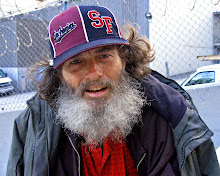
By the National Coalition for the Homeless
Here are a few facts about the homeless in America:
DEMOGRAPHICS: Two trends are largely responsible for the rise in homelessness over the past 20-25 years: a growing shortage of affordable rental housing and a simultaneous increase in poverty. Persons living in poverty are most at risk of becoming homeless, and demographic groups who are more likely to experience poverty are also more likely to experience homelessness.
AGE: In 2003, children under the age of 18 accounted for 39% of the homeless population. This same study found that unaccompanied minors comprised 5% of the urban homeless population.
GENDER: Most studies show that single homeless adults are more likely to be male than female - 67.5% of the single homeless population is male, and it is this single population that makes up 76% of the homeless populations surveyed (U.S. Conference of Mayors, 2007).
FAMILIES: The number of homeless families with children has increased significantly over the past decade. Families with children are among the fastest growing segments of the homeless population. In its 2007 survey of 23 American cities, the U.S. Conference of Mayors found that families with children comprised 23% of the homeless population.
ETHNICITY: In its 2006 survey of 25 cities, the U.S. Conference of Mayors found that the sheltered homeless population is estimated to be 42 percent African-American, 38 percent white, 20 percent Hispanic, 4 percent Native American and 2 percent Asian.
VICTIMS OF DOMESTIC VIOLENCE: Battered women who live in poverty are often forced to choose between abusive relationships and homelessness. A 2003 survey of 100 homeless mothers in 10 locations around the country found that 25% of the women had been physically abused in the last year (American Civil Liberties Union, 2004).
VETERANS: Research indicates that 40% of homeless men have served in the armed forces, as compared to 34% of the general adult population (Rosenheck et al., 1996).
PERSONS WITH MENTAL ILLNESS: Persons with severe mental illness represented about 26 percent of all sheltered homeless persons (Annual Homeless Assessment Report to Congress, 2008). According to the Federal Task Force on Homelessness and Severe Mental Illness, only 5-7% of homeless persons with mental illness require institutionalization.
PERSONS SUFFERING FROM ADDICTION DISORDERS: Among surveyed homeless people 38% have an alcohol problem, and 26% report problems with other drugs (National Health Care for the Homeless Council). [Usually this is caused by inadequate access to mental health care and “self-medication” becomes the primary choice to experience relief.]
IMPLICATIONS: As this fact sheet makes clear, people who become homeless do not fit one general description. However, people experiencing homelessness do have certain shared basic needs, including affordable housing, adequate incomes, and health care. Some homeless people may need additional services such as mental health or drug treatment in order to remain securely housed. All of these needs must be met to prevent and to end homelessness.
_______________
Invite your family and friends to Subscribe! to Homeless In America.
Scroll down and vote in the polls.
List yourself as a blog follower, middle right column.
Donate! to the poor homeless at http://servantsofthefather.org/donate_2_homeless or post checks to - Servants of the Father of Mercy, Inc., P.O. Box 42001, Los Angeles, CA 90042. All Donations are Tax Deductible.


























No comments:
Post a Comment